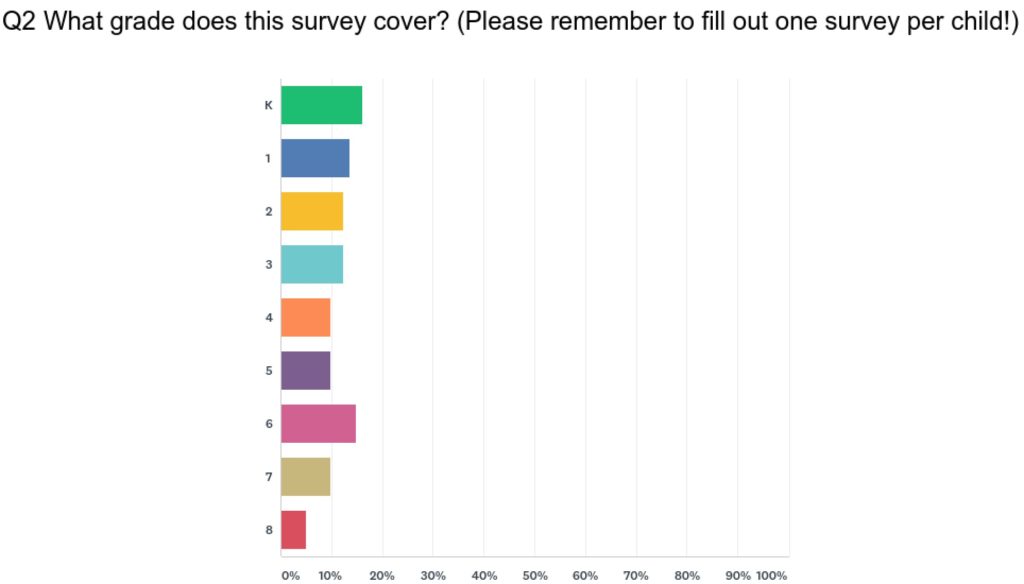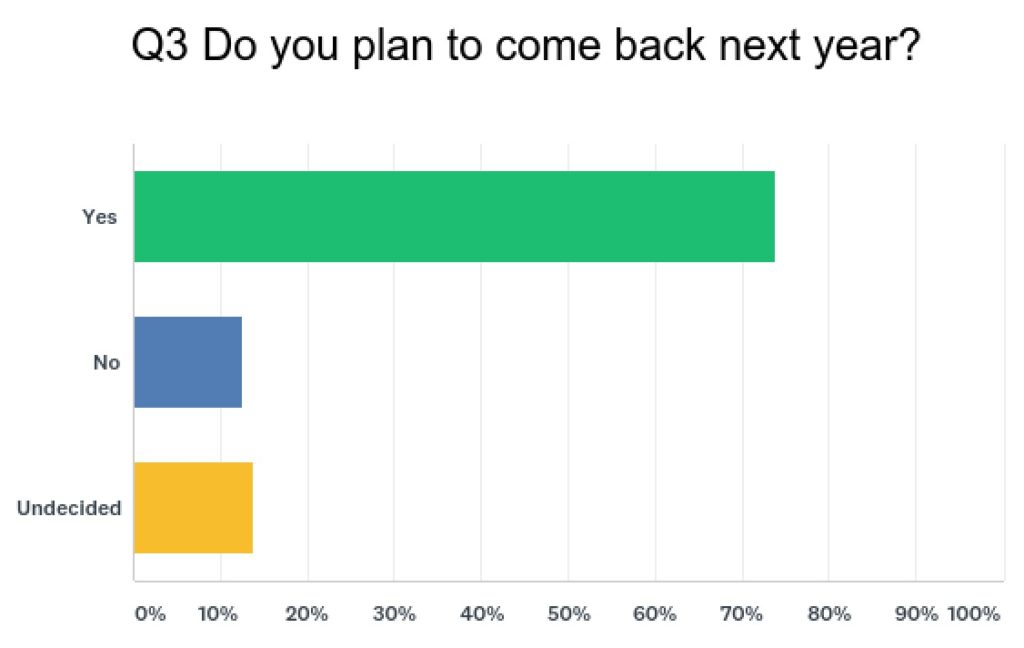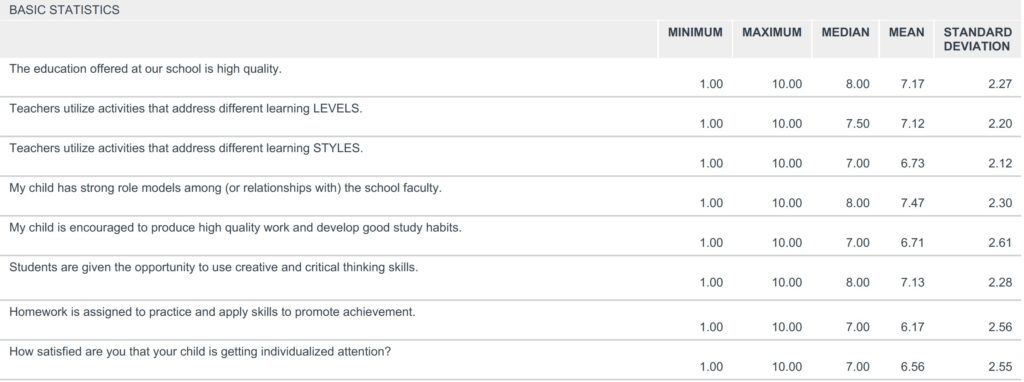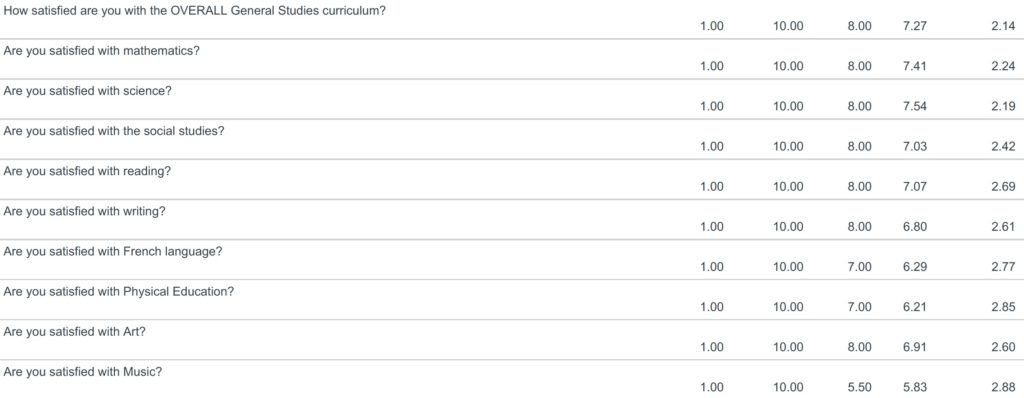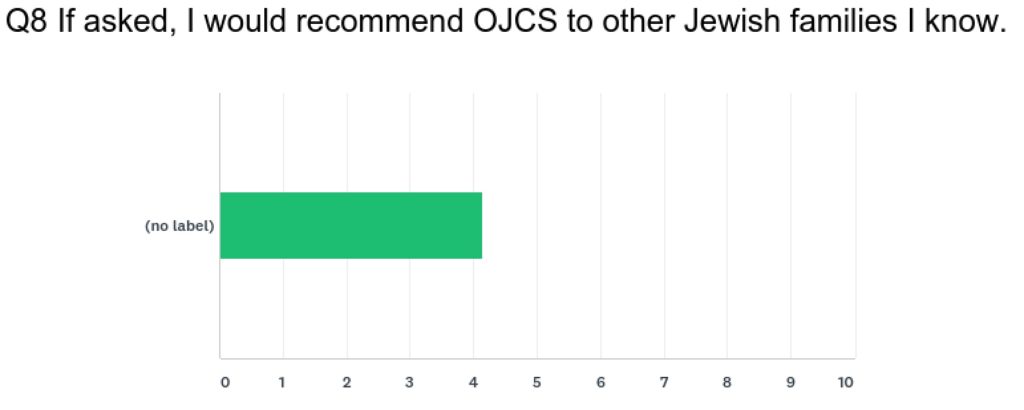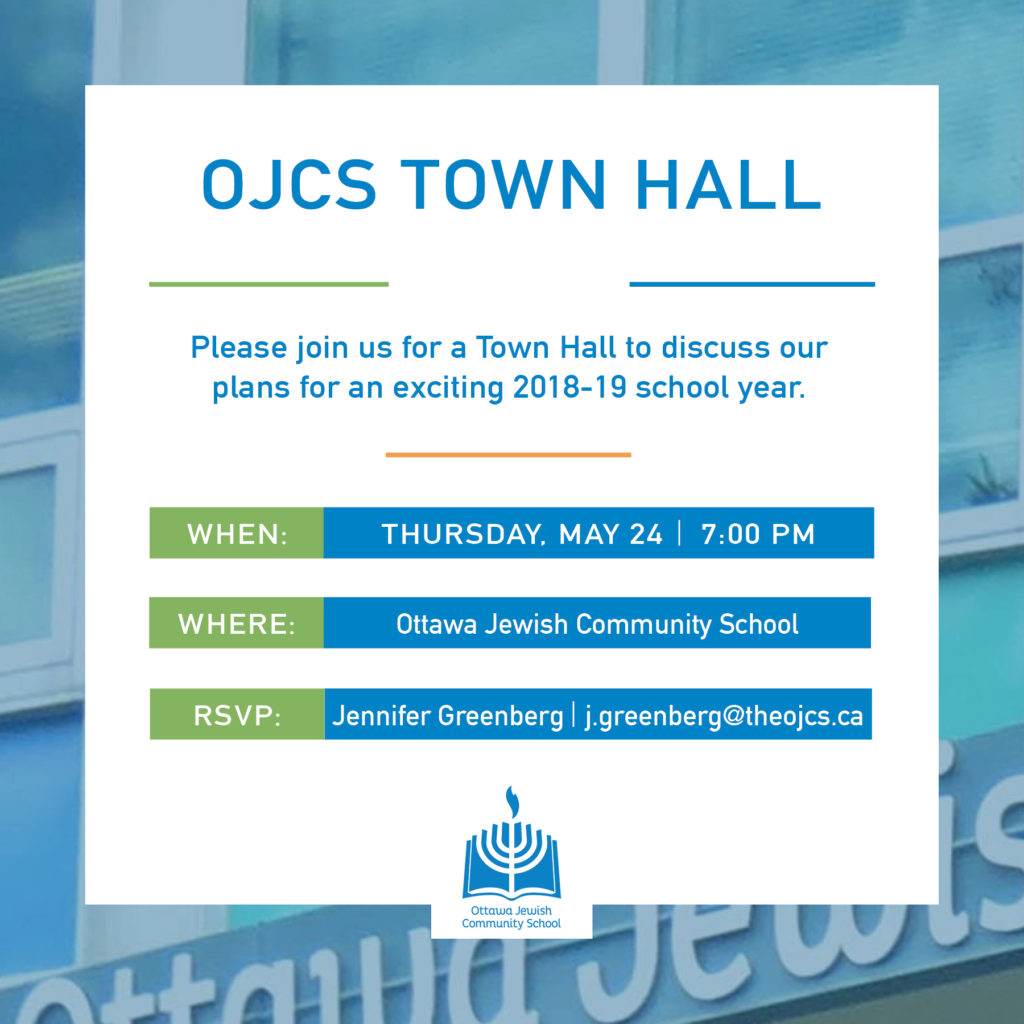In the lull between parent-teacher conferences, I spent my time reading and analyzing the results of this year’s CAT*4 testing. [I strongly encourage you to reread (or read for the first time) my philosophy on test-taking and how we planned on both sharing the tests with parents and utilizing the data in our decision-making.] We are in the process of providing our teachers with the data they need to better understand their students and to identify which test results fully resemble their children well enough to simply pass on and which results require contextualization in private conversation.
In terms of sharing out the results publicly, which I will happily do, there are a few things worth pointing out:
- Although we do have prior years, they are not “apples to apples” enough to plot as comparison data. This is mostly because of our decision to change our testing window and partially because we don’t have enough grades taking the test often enough. (I have data on spring tests from two and three years ago for grades 3 & 6.) If that changes, part of this annual analysis will consist of tracking the grades over time to see if…
- The same grade scores as well or better each year.
- The same class grows at least a year’s worth of growth.
- The other issue is in the proper understanding of what a “grade equivalent score” really is.
Grade-equivalent scores attempt to show at what grade level and month your child is functioning. However, grade-equivalent scores are not able to show this. Let me use an example to illustrate this. In reading comprehension, your son in Grade 5 scored a 7.3 grade equivalent on his Grade 5 test. The 7 represents the grade level while the 3 represents the month. 7.3 would represent the seventh grade, third month, which is December. The reason it is the third month is because September is zero, October is one, etc. It is not true though that your son is functioning at the seventh grade level since he was never tested on seventh grade material. He was only tested on fifth grade material. He performed like a seventh grader on fifth grade material. That’s why the grade-equivalent scores should not be used to decide at what grade level a student is functioning.
One final caveat about why share out grade and class averages at all when so much of our focus is on personalized learning and individual growth…
Here, my thinking has been influenced by the work I was doing prior to coming to Ottawa, in my role as Executive Director of the Schechter Day School Network and then part of the transition team which helped create Prizmah. I cannot tell you how many conversations I have had with colleagues about the different challenges Jewish day schools often have from their secular private school and high-achieving public (and/or gifted programs and in the States and/or magnet and/or charter) school neighbors. The biggest difference comes down to a philosophy of admissions. [Please note that although a primary audience for my blog are OJCS parents, other folk read as well, so I am including references to forms of public education that are commonly found in the States.]
Most Jewish day schools attempt to cast the widest net possible, believing it is our mission to provide a Jewish day school education to all who may wish one. We do not, often, restrict admission to a subset of the population who score X on an admissions test and we do not, often, adjust birthday cutoffs or recommend grade repeating to maximize academic achievement. However, schools who we are most often compared to in terms of academic achievement often do one or both. If you then factor in whether or not you exempt special needs students from the testing and whether or not you explicitly teach to the test, you may have quite an uneven playing field to say the least.
To reframe and reset the discussion:
Jewish day schools have an inclusive admissions policy, but are expected to compete equally with elite private and high-achieving public (and gifted and, in the States, magnet and charter and suburban public) schools who have exclusive admissions policies or homogeneous populations.
So, in light of all of that – if a Jewish day school with an inclusive admissions policy, a non-exempted special needs population, and a commitment to “not teach to the test” – if that kind of school could demonstrate that it was achieving secular academic excellence on par with elite schools; well to me that would be news worth sharing.
So with all those caveats in mind, in the spirit of full transparency, and with the attitude that all data is valuable data, allow me to present this year’s results:
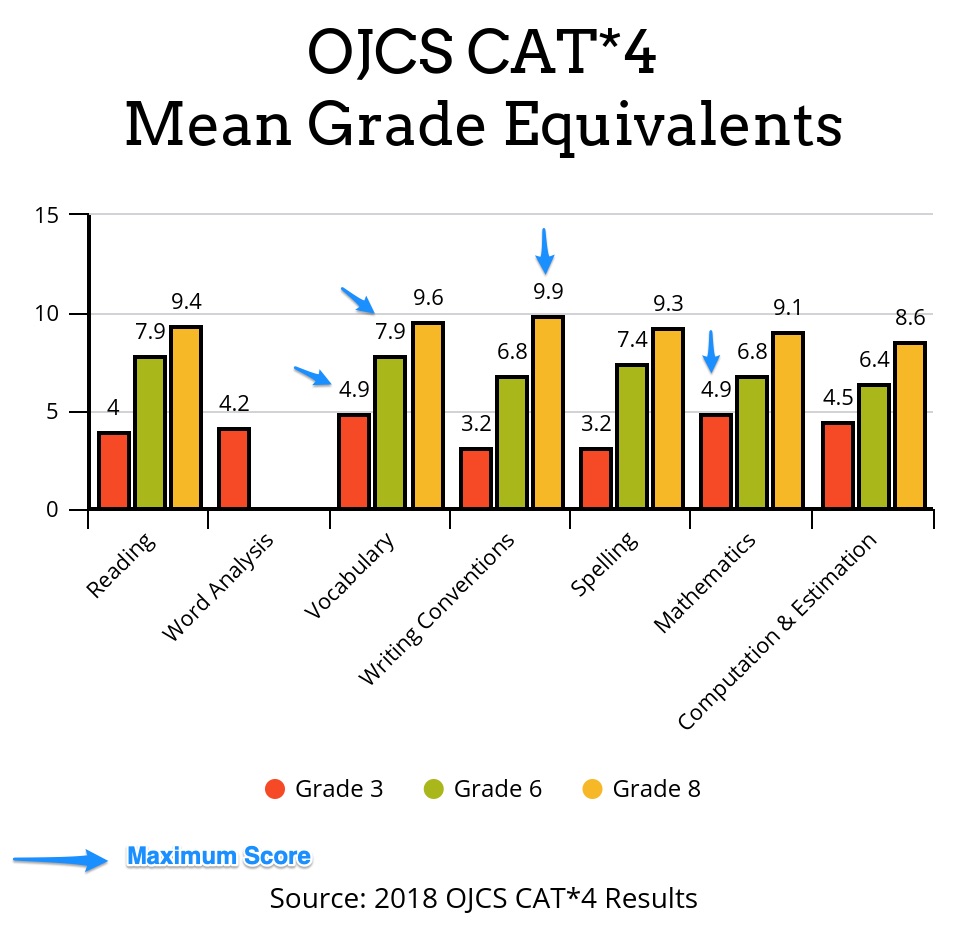
The bottom line of this graphic is that each grade in the Ottawa Jewish Community School scored, with a few exceptions, at a mean grade equivalent a full year higher than their current grade. There are a few (Grade 3 Writing, Grade 3 Spelling, Grade 6 Writing, Grade 6 Spelling and Grade 6 Computation) that are closer to their current grade. [Part of our ongoing analysis and annual comparison would be to learn more about our current spelling and writing outcomes. Part of our deeper investigation is whether there is a way to layer on standardized French and possibly Hebrew tests to learn more about those important outcomes.] There are a lot of grades/topics whose averages are significantly higher than that, but let the boldface sink in for a bit.
Too much time dedicated to Jewish Studies? Nope – a high-quality Jewish Studies program enhances secular academics. Too much time dedicated to Skyping or blogging? Nope – an innovative learning paradigm not only positively impacts student motivation, but leads to higher student achievement.
I can sense the tone of triumphalism in my writing and, although I am extremely proud of our students and teachers for their achievements, I do not wish to sound boastful. But with the state of Jewish day school education being what it is, when there is good news to share…share it one must! I firmly believe that Jewish day schools with dual-curricula (and in our case tri-curricula!) and innovative pedagogy and philosophy produce unmatched excellence in secular academics. Here in our school, we will have to prove it year after year, subject after subject, and student after student in order to live up to our mutually high expectations, but what an exciting challenge it shall be coming to school each day to tackle!



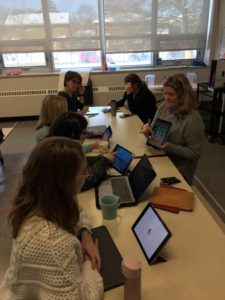 In this session, they are learning about how to use the “
In this session, they are learning about how to use the “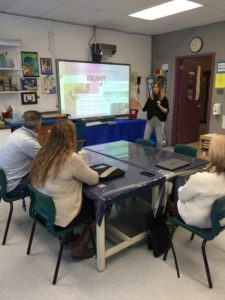 In this session, teachers are being wowed by what they can do with
In this session, teachers are being wowed by what they can do with 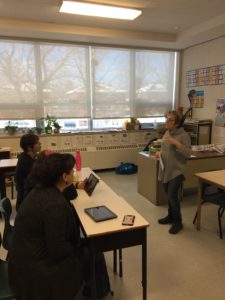 Do you know how amazing it is to watch a teacher who was nervous and reluctant to try a tool wind up teaching other teachers about that tool? I do! Because I am watching it happen in real time…iMovie isn’t so much the chiddush here, but for teachers to better understand how using video as a tool for documentation of/as/for learning is so critical for developing the artifacts we need to better understand their growth and to better explain that growth for parents. One issue that has come up is how great video is for helping students for whom writing is a challenge be able to better express all that they are capable of. [Side note: Watching the cohort begin to use similar language from the work they are doing with Silvia shows you that the learning is beginning to stick. It was the same from our last
Do you know how amazing it is to watch a teacher who was nervous and reluctant to try a tool wind up teaching other teachers about that tool? I do! Because I am watching it happen in real time…iMovie isn’t so much the chiddush here, but for teachers to better understand how using video as a tool for documentation of/as/for learning is so critical for developing the artifacts we need to better understand their growth and to better explain that growth for parents. One issue that has come up is how great video is for helping students for whom writing is a challenge be able to better express all that they are capable of. [Side note: Watching the cohort begin to use similar language from the work they are doing with Silvia shows you that the learning is beginning to stick. It was the same from our last 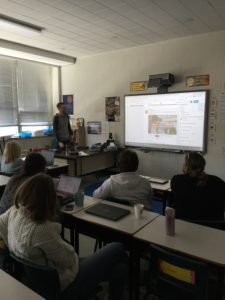 What’s the best way to do PD in 2018? Get on
What’s the best way to do PD in 2018? Get on 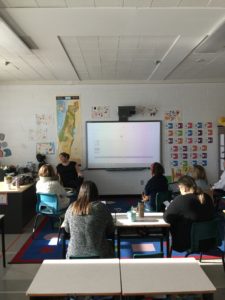 Skype
Skype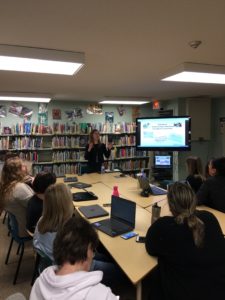 This is probably the most traditional and formal of our sessions today. Our new Director of Special Needs Sharon Reichstein is leading a session on how by beginning with relationships we can better meet the diverse needs of all our students. As a school committed to being as inclusive as our resources allow for, and a school committed to moving towards a personalized learning approach for all its students, using one (personalization) to help achieve the other (inclusion) is both natural and super complicated. Or rather, it might make sense philosophically or in the abstract, but the magic or the artistry is in what happens at 9:15 AM on a Tuesday in a French class with a specific group of children.
This is probably the most traditional and formal of our sessions today. Our new Director of Special Needs Sharon Reichstein is leading a session on how by beginning with relationships we can better meet the diverse needs of all our students. As a school committed to being as inclusive as our resources allow for, and a school committed to moving towards a personalized learning approach for all its students, using one (personalization) to help achieve the other (inclusion) is both natural and super complicated. Or rather, it might make sense philosophically or in the abstract, but the magic or the artistry is in what happens at 9:15 AM on a Tuesday in a French class with a specific group of children.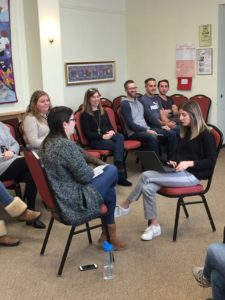 For our last session this afternoon, we went back to reconnect dots with the “Prototype Protocol” our
For our last session this afternoon, we went back to reconnect dots with the “Prototype Protocol” our 



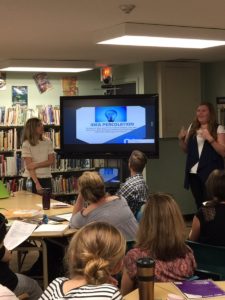
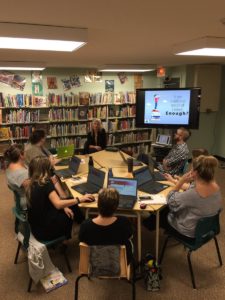
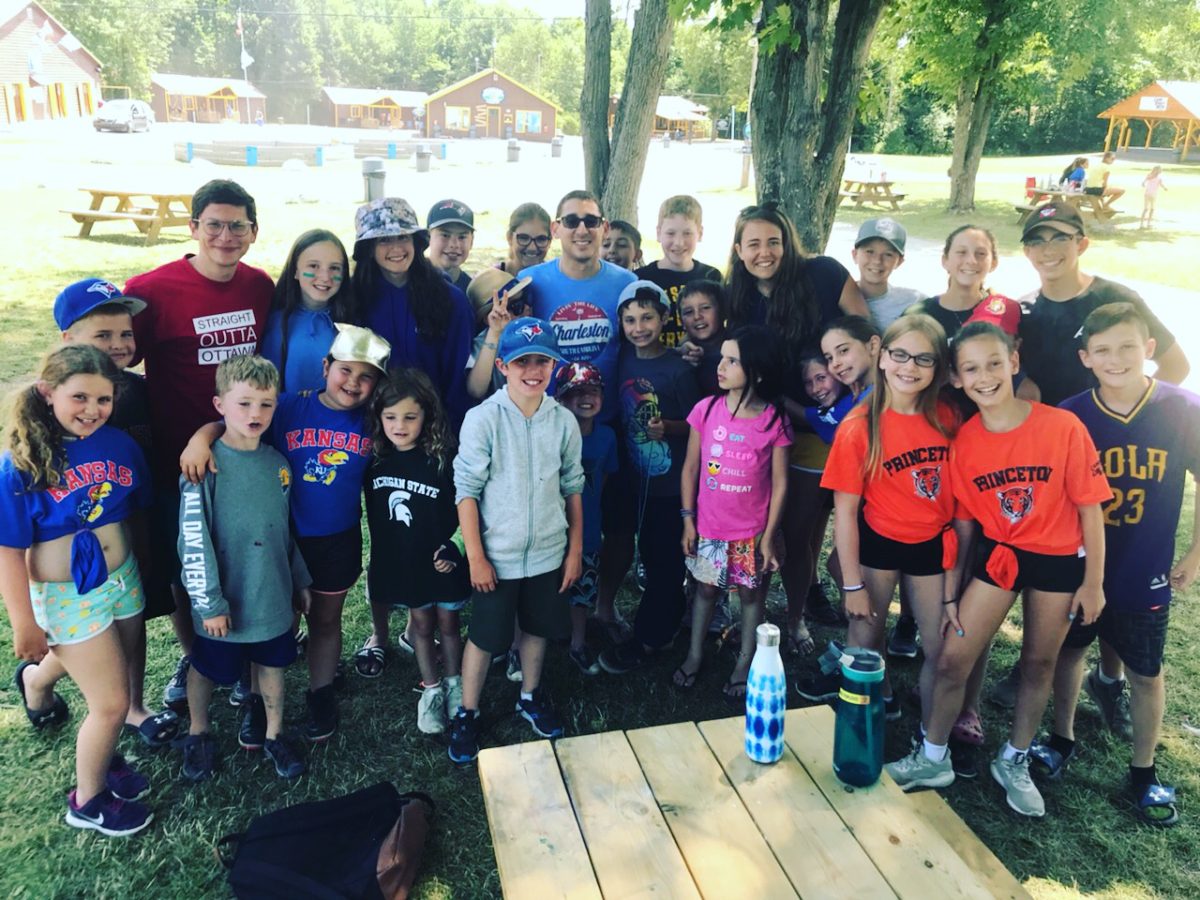

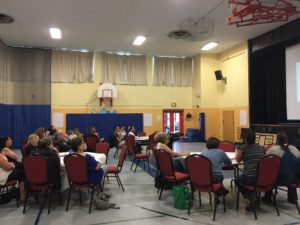 Having ended the year with greater clarity around our
Having ended the year with greater clarity around our 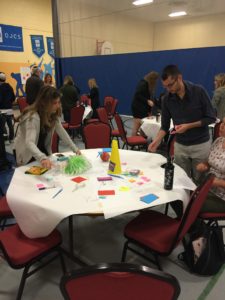 dimensional visual representations of how they can connect their practice to the stars and how to connect the stars to each other.
dimensional visual representations of how they can connect their practice to the stars and how to connect the stars to each other. 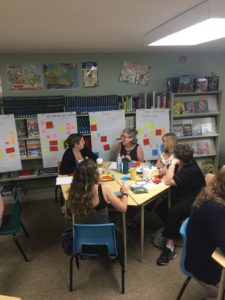 A number of our teachers ran mini-prototypes during the last months of school. We took some time together for those teachers to share more broadly with the full faculty what happened and to solicit feedback. It was very important to signal that no matter where they were at by this time, that taking the lead and sharing their successes and failures is crucial for the school to demonstrate that the values that have been established will continue to be our north stars for years to come. We were inspired by just how much got accomplished in such a short time and how much is to come in 2018-2019.
A number of our teachers ran mini-prototypes during the last months of school. We took some time together for those teachers to share more broadly with the full faculty what happened and to solicit feedback. It was very important to signal that no matter where they were at by this time, that taking the lead and sharing their successes and failures is crucial for the school to demonstrate that the values that have been established will continue to be our north stars for years to come. We were inspired by just how much got accomplished in such a short time and how much is to come in 2018-2019.
